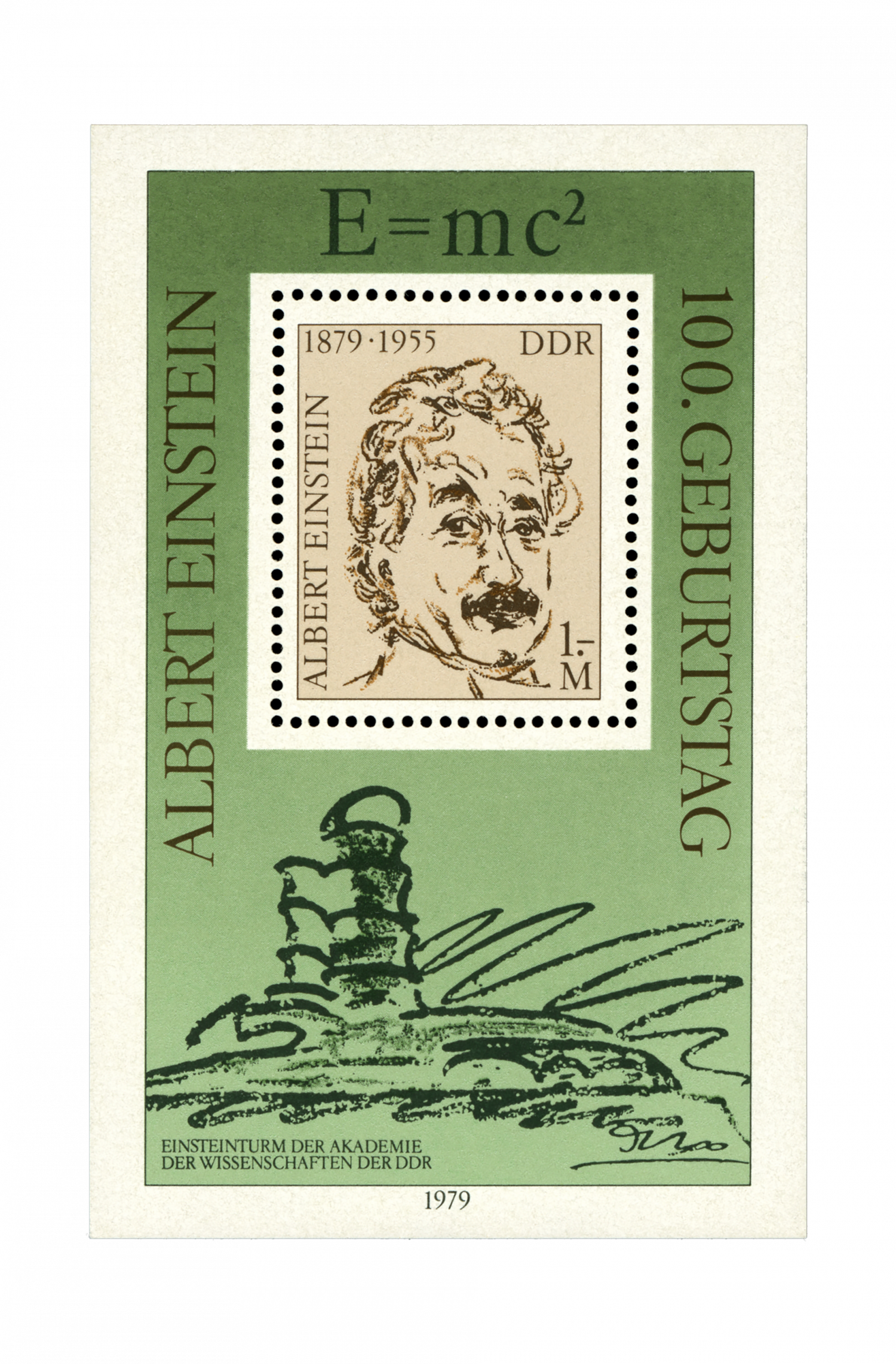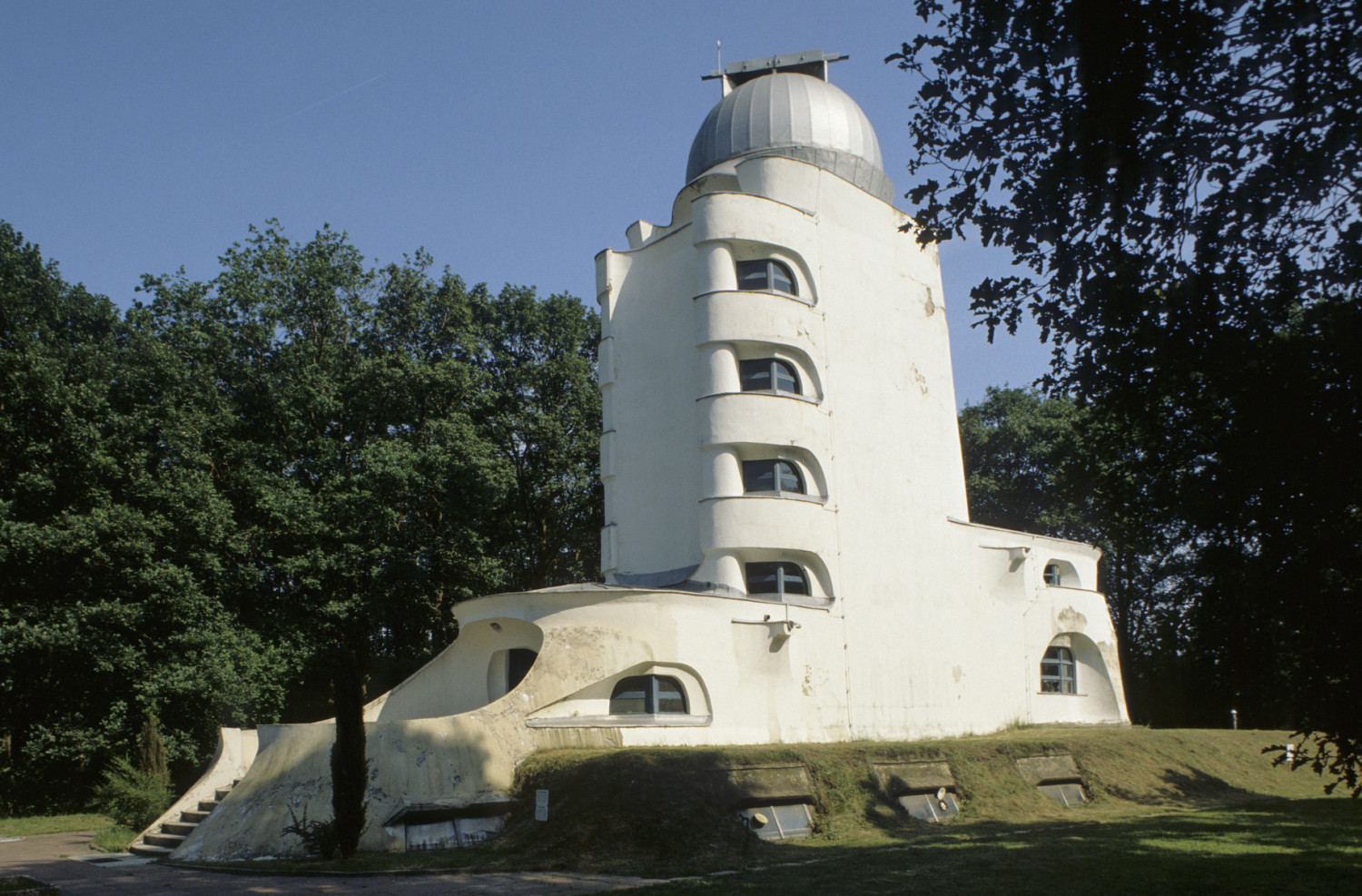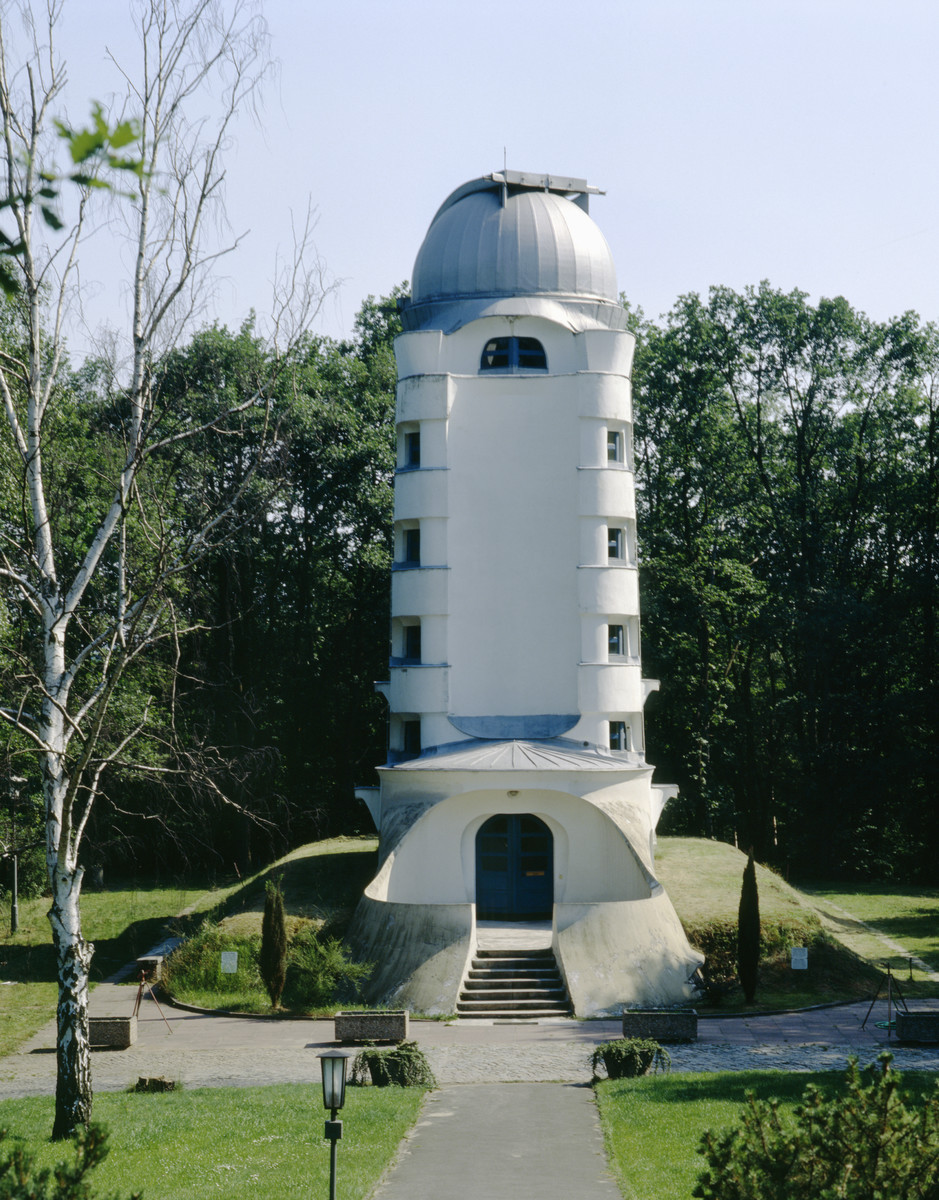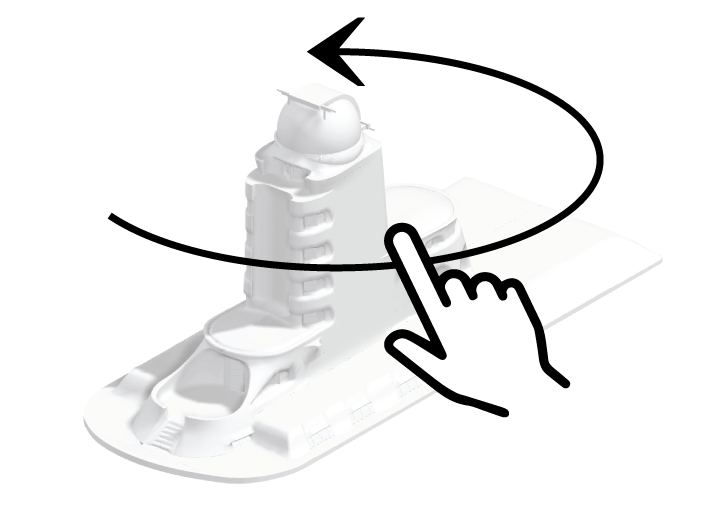The cosmonauts (as astronauts were called in East Germany) Sigmund Jähn and Valery Bykovsky flew to the Salyut 6 space station in August 1978. Jähn was the first German in space. One of the sites at which they prepared for their mission was on the Telegrafenberg hill and this was also where they debriefed after returning from space on 3 September 1978. The two cosmonauts visited the Einstein Tower shortly after landing. This was the occasion for renewed refurbishment of the rendering and paintwork, after the restoration carried out between 1974 and 1976, when the roofs and dome had been cleaned, spackled with thioplast, and coated with tar epoxy resin. The Einstein Tower was now an official monument, having been given protected status by the East German Ministry of Culture in 1976.
In preparation for the welcoming ceremony for the cosmonauts, about 30 per cent of the exterior render was removed in 1978 and replaced with cement plaster in the relevant places. The same wax paint was applied as had been used in the 1950s.




New repair work was needed in 1984 in preparation for the 60th anniversary of the Einstein Tower’s inauguration. Once again, the work focused on restoring the render, which was burned off with a propane torch and scraper and then patched and sanded back before being painted with a polyacrylate sealant. The windows and doors were given a new finish and the dome was painted with aluminium bronze. These repairs did not last long either. In 1995, when the Wüstenrot StiftungWüstenrot Foundation (Wüstenrot Stiftung Gemeinschaft der Freunde Deutscher Eigenheimverein e. V.) devises and implements projects in the areas of monument preservation, science, research, education, art, and culture. It carried out the restoration of the Einstein Tower between 1997 and 1999 and between 2021 and 2023. went to get an initial idea of the situation prior to restoring the Einstein Tower from the ground up, the old familiar patterns of damage were evident.
Jähn and Bykovsky returned to the Telegrafenberg hill in 1988 on the tenth anniversary of their space flight to unveil the double bust erected in their honour, which stands not far from the Einstein Tower. The tower remained an important visual and scientific point of reference for East German astrophysicists and solar researchers. Although there was a smooth transition in operations after the fall of the Berlin Wall, many documents are missing – which can probably be explained by archival relocations after reunification –making it difficult to reconstruct the history of the monument and its renovations during the GDR era.





